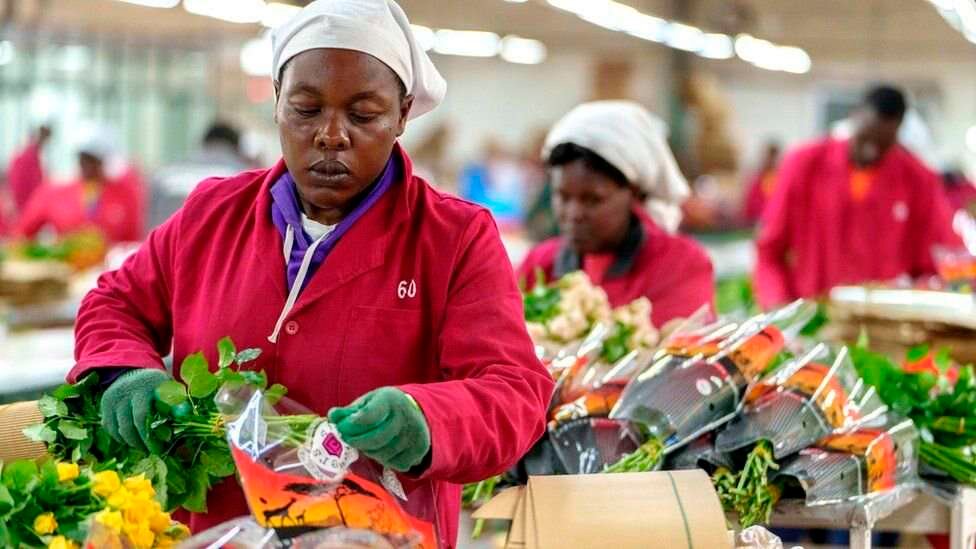[ad_1]
Economy
Export-import gap narrows first time since Covid-19
Thursday June 01 2023
Packing flowers in cartons for export. Kenya is the world’s fourth biggest flower exporter. FILE PHOTO | BBC
Kenya’s goods trade deficit for the first quarter of the year narrowed marginally for the first time since the pandemic on reduced expenditure on capital goods at a time the government slowed investment in infrastructure projects.
The deficit – the gap between merchandise exports and imports – dropped to Sh364.7 billion in the January-March 2023 period compared with Sh384.21 billion, provisional official data shows.
The 5.11 percent, or Sh19.64 billion, shrink in the merchandise trade gap came at a time growth in prices of major imports moderated, while bottlenecks in international supply chains also eased, helping cut freight costs for importers.
The growth in value of imports was flat, rising a measly 0.81 percent year-on-year to nearly Sh595.89 billion in the three-month period, according to the data collated by the Central Bank of Kenya.
Read: Kenya’s import-export gap widens to Sh1.37 trillion
That growth was slower than the 11.81 percent climb in earnings from exports to Sh231.32 billion.
“Imports overall growth has been slow driven largely by a decline in machine and transport goods due to closing in infrastructure projects. Capital goods have declined while consumer goods are largely flat,” CBK governor Patrick Njoroge told an online press briefing on Wednesday.
“The exports have remained strong. They are driven by tea and manufacturers.”
The data shows exports were largely lifted by goods sold in smaller quantities, officially classified as ‘others’, whose value jumped 24.96 percent to Sh102.50 billion in the first quarter of the year.
Income from tea, Kenya’s single largest export by value, increased 9.38 percent to Sh43.22 billion, while horticulture exports were flat at Sh32.47 billion compared with Sh32.44 billion a year earlier.
Earnings from coffee, however, dropped 18.56 percent to Sh8.14 billion, the data which CBK obtains from the Kenya Revenue Authority shows.
The slowdown in the growth of imports, on the other hand, was largely helped by reduced expenditure on materials by manufacturers which dropped 20.55 percent to Sh86.26 billion.
The value of machinery and transport equipment also fell 16.64 percent year-on-year to Sh95.45 billion.
The January-March period, nonetheless, experienced a sharp rise in food imports as the country battled a prolonged drought, the worst in four decades.
Expenditure on food bumped 55.91 percent to Sh77.30 billion, while import bills for fuel and lubricants rose a relatively moderate 16.28 percent to Sh150.45 billion.
Kenya has over the years struggled to narrow its goods trade deficit partly due to reliance on traditional farm produce exports such as tea, horticulture and coffee which are largely sold raw, fetching relatively lower earnings.
A persistently higher trade deficit, economists say, slows down the creation of new job opportunities for the growing skilled youth as most revenue earned within Kenya is spent on buying goods from foreign countries, thereby raising production and job openings in source markets.
Read: Kenya-China trade gap grows despite diplomatic charm
A widening import-export gap also piles some pressure on the shilling as the demand for dollars outstrips the supply.
The shilling, for instance, lost about 7.26 percent of its value against the US dollar in the review period to 132.33 units, largely on the back of higher demand for the greenback by importers.
→ [email protected]
[ad_2]
Source link



